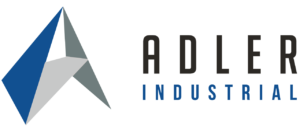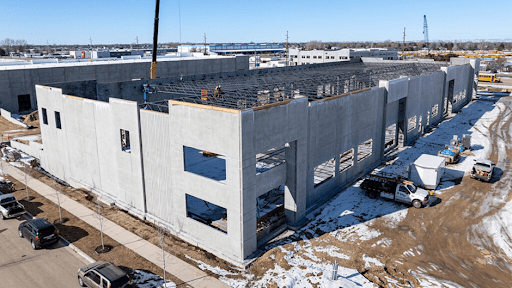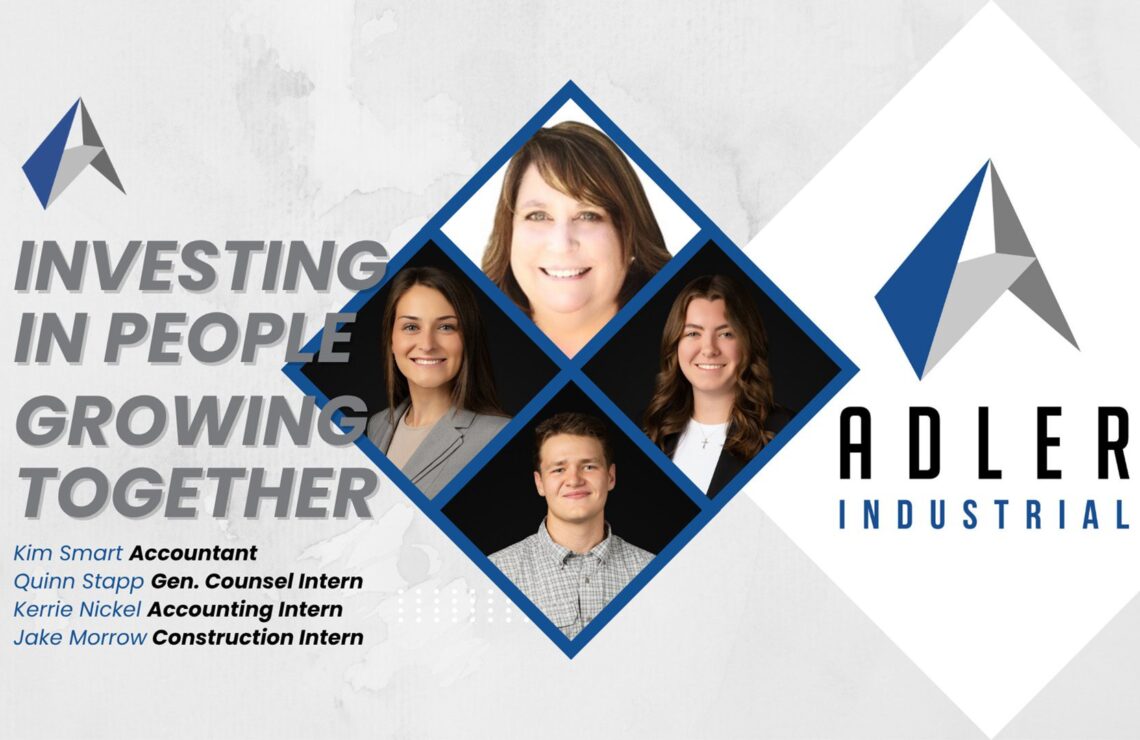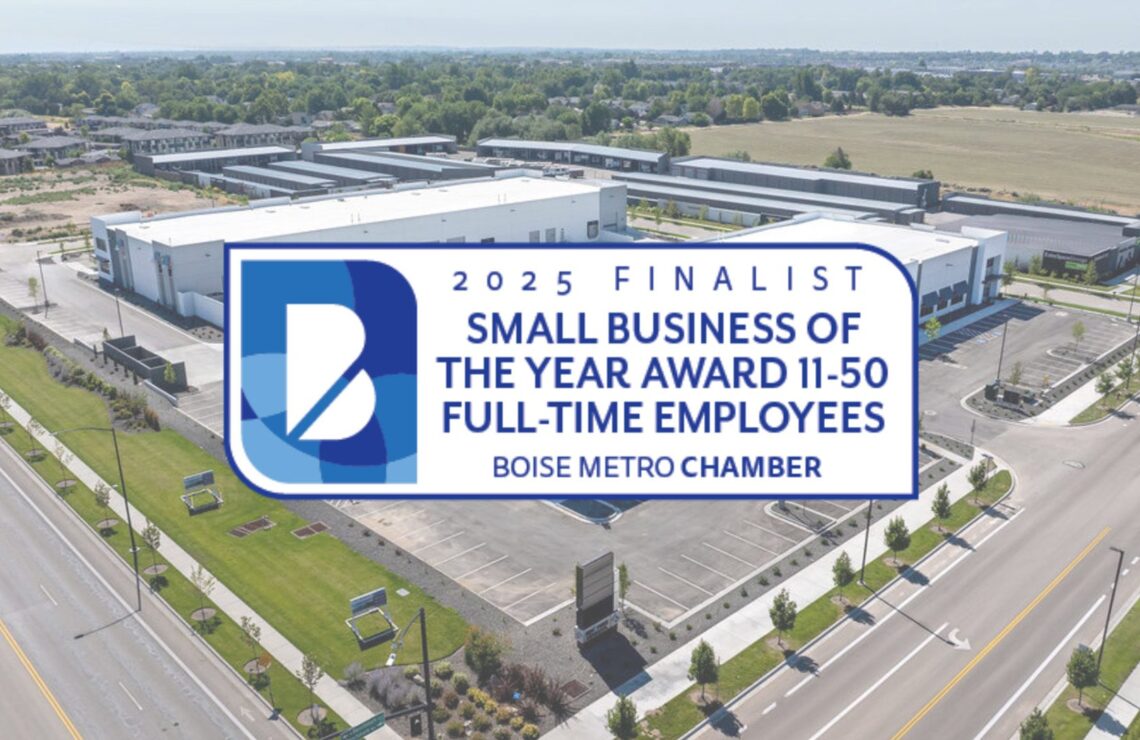In supply chain management, speed, precision, and cost control are non-negotiable. Even the most advanced transportation fleets, sophisticated tracking systems, and skilled logistics teams can’t overcome the inefficiencies caused by poorly designed or outdated facilities. The warehouses, distribution centers, and logistics hubs where goods are stored, processed, and shipped are the structural backbone of distribution efficiency. This is where Industrial Real Estate Developers for Supply Chain Companies play a defining role. Our work goes beyond construction; we create operational hubs that directly improve the performance of distribution networks. By designing facilities that align with technology, transportation access, and day-to-day workflows, we help supply chain companies reduce lead times, cut costs, and meet increasingly demanding delivery expectations.
Modern distribution requirements are shaped by rapid e-commerce growth, global sourcing, and the pressure for faster order fulfillment. A facility must not only meet current needs but also be adaptable to future technologies and operational shifts. At Adler Industrial, we approach every project with this in mind, integrating advanced automation capabilities, optimizing truck and freight access, and creating flexible layouts that can adjust to changing inventory or market demands.
For supply chain companies, the right facility is more than a building; it’s a competitive advantage. Our role is to make sure that every square foot contributes to operational efficiency, customer satisfaction, and long-term scalability.
Understanding Supply Chain-Specific Real Estate Needs
In supply chain operations, the facility is far more than a place to store inventory; it’s an active, integral part of the entire distribution process. Generic warehouse space often falls short because it lacks the specialized design elements needed to support the pace, volume, and precision that modern supply chains demand. That’s why Industrial Real Estate Developers for Supply Chain Companies focus on tailoring every square foot to maximize throughput, integrate advanced technology, and handle the demands of high inventory turnover.
Different types of products create vastly different facility requirements. For example, perishable goods such as fresh produce, seafood, or pharmaceuticals require climate-controlled cold storage zones, precise temperature monitoring, and fast-moving distribution systems to maintain product integrity. Fragile items, like glassware, electronics, or medical equipment, require custom racking systems, padded handling areas, and careful traffic flow planning to reduce the risk of damage. Hazardous materials must be stored in strict compliance with safety regulations, often in isolated zones with specialized ventilation, spill containment measures, and reinforced construction. For oversized goods such as machinery, building materials, or vehicles, we plan for wide aisle configurations, reinforced flooring to bear heavy loads, and customized dock heights for easy loading and unloading.
Our process always begins with collaboration. We work closely with logistics managers, operations leaders, and technology integrators to understand exactly how goods will flow through the facility. This may lead us to design multi-temperature environments within a single building, implement cross-docking layouts to move goods directly from inbound to outbound trucks without long-term storage, or dedicate specific areas to value-added services such as kitting, labeling, or returns processing.
Connectivity is just as important as the building itself. Many facilities require multi-modal transport access, direct highway links for trucking, proximity to rail lines for bulk freight, or short travel times to air and sea ports for time-sensitive shipments. Every decision we make is aimed at reducing handling times, streamlining operational processes, and ensuring that goods keep moving without costly interruptions.
Strategic Site Selection for Distribution Efficiency
Even the most advanced facility cannot perform at its best if it’s in the wrong location. Strategic site selection is one of the most critical factors in optimizing a distribution network, and it directly impacts delivery times, transportation costs, and customer satisfaction.
Our approach to site selection is rooted in data and long-term thinking. We study transportation corridors to identify locations that provide fast, cost-effective access to major highways, ports, airports, and rail hubs. This positioning is essential for maintaining tight delivery schedules and reducing fuel and labor costs associated with long-haul routes. For companies serving wide geographic areas, we often recommend regional distribution centers positioned as part of a hub-and-spoke model, allowing products to be staged closer to customers while maintaining centralized control over inventory.
We also assess labor market strength before making a location decision. A highly automated facility still requires skilled staff for maintenance, oversight, and specialized tasks, and access to a reliable workforce is essential. By choosing sites near strong labor pools, we help clients avoid staffing shortages and operational delays. Community infrastructure is equally important; road capacity, dependable utilities, and access to service providers can influence how smoothly a facility runs.
Finally, we always consider future scalability during site selection. The best location is one that works today and allows room for expansion tomorrow. We look for sites with growth potential, favorable zoning laws, and available adjacent land for future construction. A site without expansion options can become a bottleneck in the supply chain as volumes increase, forcing companies into costly relocations. Our goal is to ensure that each facility can adapt to growth, changing market conditions, and evolving customer demands without sacrificing efficiency.
Facility Design for High-Performance Distribution Networks
Once the right site is secured, the real challenge begins: designing a facility that supports the fastest, most accurate movement of products from receiving to shipping. In the world of supply chain logistics, layout is everything. Even small inefficiencies in floor design can add up to hours of lost productivity each week, which is why we map every step of the product journey before the first wall goes up.
Our design process starts with receiving and staging. We position receiving docks for maximum truck accessibility and minimal backing or maneuvering time. These docks are connected to staging areas that allow goods to be quickly checked, scanned, and sorted before heading to storage or directly to outbound lanes in cross-dock operations. For companies handling high SKU counts, we create dedicated sorting zones and implement storage logic that places the fastest-moving items in the most accessible positions.
Storage areas are planned with the product profile in mind, weight, dimensions, turnover rates, and handling requirements. We use high-density racking for slow movers to maximize space and lower, more accessible shelving for high-volume products to improve picking speed. In refrigerated or frozen environments, we factor in airflow patterns, insulation, and energy-efficient refrigeration systems to maintain product quality.
Automation is no longer optional in high-performance distribution. We design facilities with robotics, conveyor systems, and automated sorting equipment integrated from the start. This includes planning for robotic forklift traffic, overhead conveyor paths, and mezzanine levels for automated storage and retrieval systems (AS/RS). We also prioritize technology infrastructure, full Wi-Fi coverage, RFID scanning, and IoT connectivity to enable real-time inventory tracking, predictive maintenance, and data-driven optimization.
Ceiling height, column spacing, and clear floor space are not afterthoughts; they’re essential to maximizing capacity and maintaining an efficient flow. High ceilings allow for vertical storage solutions, while wide column spacing prevents traffic bottlenecks and improves maneuverability for both equipment and workers. Every aisle, dock, and staging area is planned for unobstructed, logical movement.
Finally, we build flexibility into every layout. Seasonal demand surges, new product launches, and shifting customer expectations require facilities that can adapt quickly. By designing open areas, movable racking systems, and easily reconfigurable packing stations, we ensure that the facility remains a living, adaptable part of the supply chain that can evolve as the business does.
Scalability and Future-Readiness in Supply Chain Facilities
We believe that a distribution facility should be as relevant 10 years from now as it is on opening day. Supply chains are in constant motion, markets expand, product lines diversify, technology advances, and facilities must be ready to grow without causing costly disruptions.
We start with scalable construction. Modular building designs allow companies to expand in phases, adding new wings or sections as demand increases. This phased approach means you can scale up without halting current operations or forcing a full relocation. Every expansion zone is planned during the initial design, from where walls can be extended to where new docks, staging areas, or racking systems will be added.
We also design overcapacity into critical infrastructure. Electrical systems are sized to handle additional automation equipment, HVAC systems are planned with future cooling or heating demands in mind, and plumbing is built to accommodate expanded operations. Adjustable racking systems allow companies to reconfigure storage layouts to suit changing product profiles or higher SKU counts.
Multi-use spaces are another cornerstone of our approach. We design areas that can shift roles over time, for example, converting underutilized space into a dedicated returns processing center, kitting area, or even a specialized value-added service station. This kind of adaptability extends the usable life of the facility and reduces the need for expensive external solutions.
Looking ahead, we prepare for emerging logistics technologies. We incorporate provisions for autonomous vehicle docks, drone delivery zones, and future integration of AI-driven inventory systems. By making these considerations early, we help our clients avoid disruptive retrofits and remain competitive in a rapidly changing logistics landscape.
Sustainability and Compliance in Supply Chain Real Estate
Sustainability in supply chain real estate is no longer an optional “nice-to-have”; it’s a critical part of operational strategy and long-term profitability. The most forward-thinking companies understand that green buildings aren’t just better for the environment; they’re more efficient to run, they reduce operating expenses, and they strengthen relationships with eco-conscious partners, investors, and customers. At Adler Industrial, we integrate sustainability at every stage of planning and development to make sure the facility is not only compliant but also built for cost savings and brand value.
We start with energy efficiency because it’s one of the fastest ways to reduce operating costs. Our projects often feature LED lighting systems with motion and daylight sensors, ensuring that lighting is only used when and where it’s needed. We install high-efficiency HVAC systems that maintain precise climate control while minimizing energy waste, supported by advanced insulation that keeps temperature levels stable and reduces heating and cooling demands. When possible, we incorporate renewable energy solutions like rooftop solar arrays or solar carports, which can offset a significant portion of utility costs while reducing environmental impact.
Water use is another important sustainability metric, especially for high-volume logistics operations. We implement water-saving systems such as low-flow fixtures, sensor-based taps, and closed-loop cooling systems. Where feasible, rainwater harvesting systems can also be integrated to support non-potable water needs like landscape irrigation or cleaning. We also help clients adopt waste reduction programs that improve recycling rates, minimize landfill contributions, and streamline materials handling in line with corporate sustainability policies.
Compliance is the other half of the equation, and it’s non-negotiable. Every facility we design and build meets or exceeds environmental regulations, zoning requirements, and occupational safety standards. This means safe handling and storage protocols for all goods, specialized ventilation systems for facilities managing hazardous materials, reinforced flooring for heavy loads, and advanced fire suppression systems for maximum safety. We work closely with compliance officers and safety managers to ensure all operational requirements are addressed from day one, reducing the risk of costly retrofits or shutdowns.
Sustainable, compliant facilities also have a branding advantage. Companies operating from LEED- or WELL-certified buildings can demonstrate their environmental commitment to customers, investors, and partners, strengthening their market position. For many supply chain companies, these certifications are more than plaques on the wall; they’re tangible proof of leadership in corporate social responsibility.
Conclusion – Building the Backbone of Supply Chain Efficiency
A well-designed facility is more than a warehouse; it’s the heartbeat of a distribution network. The right space can shorten delivery times, improve order accuracy, reduce energy costs, and enhance brand reputation all at once. At Adler Industrial, we understand that supply chain success depends on combining strategic site selection, intelligent facility design, future-ready infrastructure, and sustainable, compliant operations into one cohesive development strategy.
We don’t just build for today; we build for the future, creating distribution and logistics facilities that adapt to market changes, integrate with evolving technology, and operate at peak efficiency for years to come. Whether your business is scaling rapidly, adding new distribution nodes, or upgrading outdated facilities, our role is to deliver an operational hub that works as hard as your supply chain does.
If you’re ready to strengthen your network and set your company up for long-term growth, learn how Adler Industrial can design and deliver a high-performance facility tailored to your needs.




